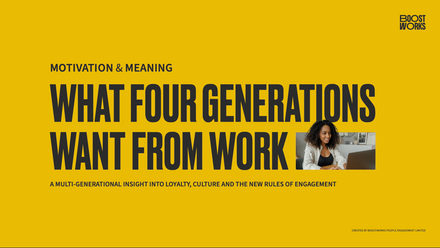Proximity bias: overcoming the challenges of rewarding a hybrid workforce fairly

A phenomenon called ‘proximity bias’ has emerged which highlights our natural instinct to favour individuals that we’re in close proximity to. Employees working on-site, and therefore in close contact with colleagues and senior leaders, are potentially more likely to receive recognition for their work than their colleagues working from home.
Employees who mainly worked from home between 2013 and 2020 were around 38% less likely on average to have received a bonus than those who never worked from home, one study found. Another revealed that people who completed any work from home in 2020 did 6 hours of unpaid overtime on average per week, compared with 3.6 hours for those that never worked from home.
The research also shows that remote workers were more likely to work in the evenings and that the sickness absence rate for workers doing any work from home in 2020 was 0.9% on average, compared with 2.2% for those who never worked from home in their main job.
These studies supports the idea that some businesses are subconsciously overlooking their remote workers’ efforts and not rewarding them fairly. Doing this long-term will be harmful to engagement and overall business success, so it’s vital to actively ensure your business is recognising and rewarding its team fairly, regardless of where individuals are working. This mentality, if not confronted, can also lead to long-term presenteeism and burnout.
If your business has or is thinking of implementing a hybrid working model, there are a few ways you can make sure it rewards fairly by understanding why proximity bias happens and how to foster a fair and equitable work environment, whether your team members are office-based or not.
Address the stigma around home working
The first step towards overcoming proximity bias is to understand and address the negative preconceptions that exist around remote working, specifically home working. Luckily, the pandemic challenged preconceived ideas that working from home is easy and enables laziness, but it’s clear that many business leaders would still prefer their employees to come into the office or a central place of work. About half of UK managers surveyed in June 2021 expected staff to be in the office at least two to three days a week.
Any hybrid working policy should be properly defined to ensure clarity across your workforce. It’s crucial that your senior leaders and managers re-evaluate any subconscious views they may have about remote workers. Ensure that no matter where an employee is working, their actions and achievements are visible to their managers, as this will help ensure that they are rewarded fairly and given the same opportunities as their colleagues on-site.
Create a strategic communications strategy
Developing an internal communication plan that targets both those in-office and remote workers is essential to bridge the physical distance between colleagues. Regular company updates that highlight the different work going on in all areas of the business are valuable. Communications such as a monthly or quarterly newsletter, posts on your intranet or internal platform and regular company video calls will keep employees from all corners of your business in the loop but also facilitate an ongoing two-way narrative and encourage relationships between members of your team, regardless of location.
Introduce a peer-to-peer recognition scheme
This is a great way of enhancing the inclusivity of your rewards because employees can thank their colleagues whenever they see fit and shine a spotlight on individual achievements. In turn this gives the business the opportunity to reward the actions and achievements of home workers that may have otherwise gone under the radar.
With the addition of a social wall – an internal forum where instances of recognition are shared – the actions and achievements of your employees are available to view throughout the company, giving remote workers just as much visibility as their colleagues who work on-site. Managers can then choose to further recognise individuals with rewards.
Level the playing field
Proximity bias can cause managers to make inaccurate judgements – ignoring skill and expertise in favour of location – which may stunt the career growth of otherwise capable and talented individuals. Employees who consistently work mainly at home were less than half as likely to have received a promotion compared with those who consistently work mainly away from home, research finds.
If remote employees aren’t seeing their contributions adequately acknowledged, it can negatively affect their employee experience. To tackle this, clearly communicate to your team what good work looks like with specific criteria or targets, keep tabs on your remote employees so you can view their progress and, ultimately, make decisions about performance and progression based on how much has been achieved, not what you perceive to have been done.
Self-awareness
Because proximity bias often happens subconsciously, it can be difficult to know how to tackle it. Ultimately, it starts with demonstrating self-awareness by understanding why it happens and facilitating ways for every employee in your workplace to collaborate and stay connected regardless of location.
Practising empathy and showing emotional intelligence is key when managing a hybrid workforce. Whether it’s health anxieties, a more desirable work/life balance or being able to save time and money on a commute, there are many reasons why your employees might want additional flexibility. Take time to understand the challenges faced by your remote workers and find ways to support them so that you can help tackle proximity bias and the stigma around remote working.
This article is provided by PeopleValue.
Supplied by REBA Associate Member, peoplevalue – The Employee Engagement Company
We are a leading provider of employee reward&recognition, benefits delivery&wellbeing solutions.







